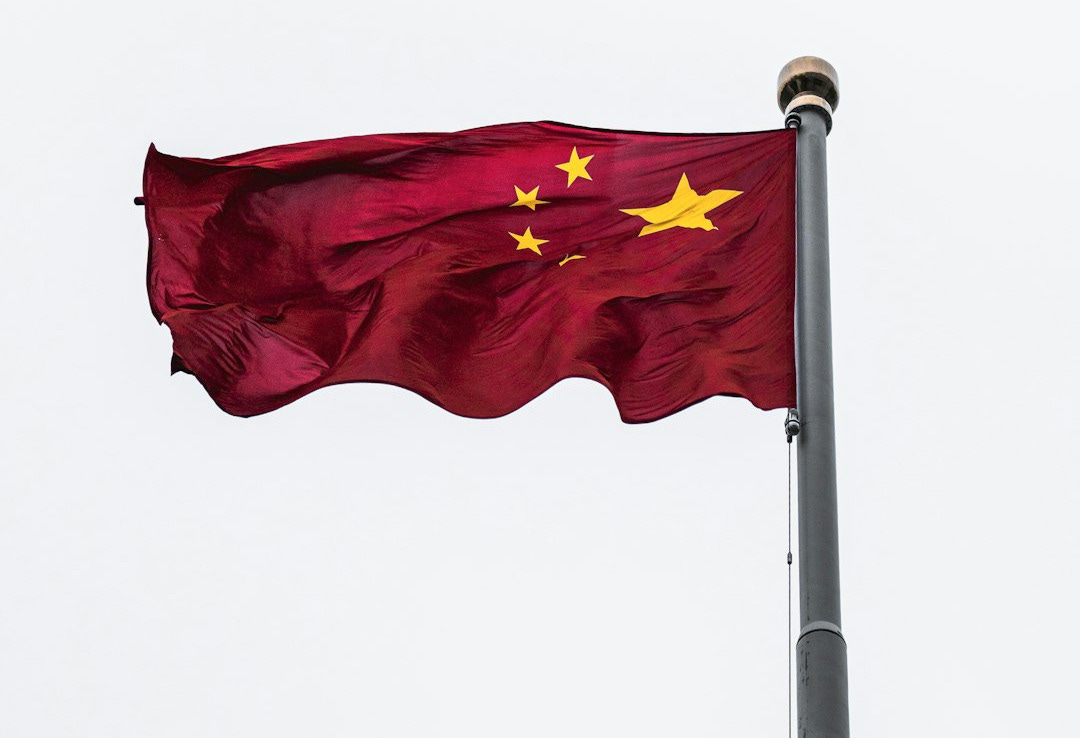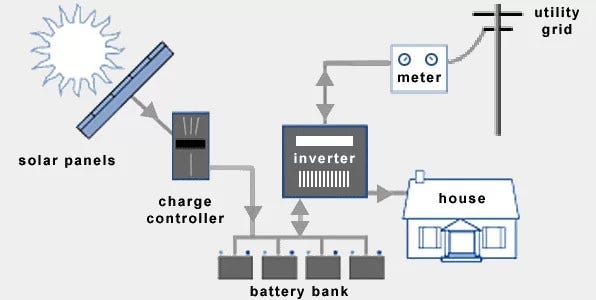China's Hidden Backdoors in the West’s Renewable Energy Systems

What if your rooftop solar panels could be used as a weapon—not by you, but by a foreign adversary thousands of miles away? What if the very devices meant to bring clean, renewable energy into our lives were secretly outfitted with rogue communication systems capable of spying, sabotaging, or even shutting down power grids? These aren’t science fiction scenarios anymore—they are urgent geopolitical and cybersecurity concerns with real-world consequences.
In May 2025, a revelation rippled through the renewable energy and national security sectors. Several investigations—including reports by Reuters, Utility Dive, and The Economic Times—confirmed the presence of unauthorized communication devices embedded within Chinese-manufactured solar power inverters sold across the West. These devices, described as “ghost machines,” operate outside normal protocols, forming an invisible, rogue network capable of remote communication—even when disconnected from the main power grid.
This isn't the first time supply chain vulnerabilities have been flagged, but the implications of this discovery are far more sinister. Experts now believe that these inverters could function as a covert cyber weapon system—what some are calling a “kill switch” infrastructure—potentially granting foreign actors the ability to cripple solar arrays en masse. The timing couldn’t be more critical: as Western nations rapidly pivot to renewables in the race against climate change, solar has become not just an environmental issue but a national security one.
How Inverters Became a Cybersecurity Threat
photo by prostarsolar.net
At the heart of the issue are solar inverters—devices that convert the direct current (DC) electricity generated by solar panels into alternating current (AC) that homes and grids can use. Modern inverters are smart, network-connected, and capable of remotely communicating with utility companies. That intelligence, however, also makes them vulnerable.
Investigators discovered that many of these inverters, particularly from leading Chinese manufacturers, contain undocumented networking components that do not appear in official specifications. These components can remain active even when the system is turned off or disconnected from the grid. They communicate through encrypted signals, often undetectable to standard monitoring systems, and are believed to be capable of issuing or receiving commands that could compromise or shut down solar infrastructure.
Strategic Sabotage or Plausible Deniability?

Why would a country embed clandestine tech into civilian infrastructure? The answer may lie in modern asymmetric warfare doctrine. In a world increasingly reliant on interconnected systems, control over those systems—especially in adversarial nations—can become a powerful lever.
“These aren’t just technical backdoors,” said one former intelligence official. “They’re strategic footholds—positioned for use not necessarily today, but on the day conflict erupts.”
The Chinese government has denied any involvement, calling the allegations politically motivated and lacking in technical evidence. Manufacturers, too, have pushed back, claiming they follow international standards and that any anomalies could be the result of third-party tampering or misunderstandings.
However, many experts disagree. The presence of hidden chips and undocumented transmitters points to deliberate design choices rather than accidental oversights.
A Fragile Grid in a Dangerous Time
To fully grasp the seriousness of this threat, we must understand just how fragile the modern power grid has become. It is a highly interconnected, load-balanced system that depends on precise coordination between energy generation, storage, and consumption. A small imbalance—or a targeted disruption—can cascade into regional or even continental blackouts.
A striking example occurred recently across Spain, France, and Portugal, where a massive blackout plunged tens of millions into darkness. The outage was traced to a failure in a key transmission system—one that, despite having redundancies, proved susceptible to rapid destabilization. While this particular incident wasn’t caused by cyber sabotage, it showcased how little margin for error the grid has.
While several possible explanations for the event have been put forward, perhaps the most chilling part of this event is one possible option that experts now believe might have caused it: a single damaged high-voltage power line in a relatively remote location.
“A fire in the south-west of France, on the Alaric mountain, which damaged a high-voltage power line between Perpignan and eastern Narbonne, has also been identified as a possible cause, Portugal's national electric company REN said.”
What they are saying is that, the entire cascade of failures across multiple countries may have stemmed from damage to just one line. Whether due to accidental failure, extreme weather, or sabotage, this fragility is a dire warning.
Now imagine what could happen if thousands of solar inverters—distributed across homes, businesses, and government buildings—were suddenly disabled or manipulated at once. The grid, already operating near its limits during high-demand periods, could falter under the pressure, triggering widespread outages and paralyzing critical infrastructure. Hospitals, transportation systems, water treatment plants—all depend on a stable electrical backbone.
In such a context, the idea of compromised inverters isn’t just a technical curiosity—it’s a national emergency waiting to happen.
The Global Implications
The potential ramifications are vast. The U.S. Department of Energy has already launched an emergency review of all Chinese-manufactured components in critical energy infrastructure. Europe is quietly following suit. Several countries are moving to ban or phase out foreign-made inverters entirely, prioritizing domestic or allied production despite higher costs.
There’s also a growing push to audit existing installations—many of which are in homes, schools, and government buildings. In an ironic twist, the tools of green energy—meant to empower decentralization—are now being re-examined through the lens of espionage and control.
Beyond national borders, this discovery is escalating tensions between China and the West. Analysts warn that if Beijing’s influence over solar infrastructure proves deeper or more widespread than currently understood, it could become a flashpoint in an already volatile geopolitical climate.
Conclusion
This isn’t the first time China has been accused of tampering with global supply chains or embedding malicious components in critical infrastructure. Over the past decade, there have been multiple incidents—ranging from espionage-enabled microchips in server motherboards to firmware backdoors in telecommunications equipment—where Chinese-manufactured technology was found to contain hidden or unauthorized features.
One of the most notable cases was reported by Bloomberg in 2018, which alleged that Chinese operatives had inserted surveillance chips into server hardware used by major U.S. companies and government agencies. Though fiercely denied, the report triggered intense scrutiny and a wave of internal audits across industries. Whether or not every claim has been proven, the consistent pattern of concern tells its own story.
What makes the current solar inverter discovery more alarming is the context. As nations transition to renewables—especially volatile sources like solar and wind—the stability of the power grid becomes even more delicate. Unlike traditional base-load power from coal or nuclear, solar and wind are intermittent and highly dependent on environmental factors. This makes real-time coordination through smart devices and grid-balancing algorithms not just useful, but essential.
If those very devices—like inverters—can be manipulated from afar, the consequences are no longer hypothetical. They are imminent.
A blackout caused by weather is a risk we accept. A blackout caused by a foreign adversary flipping a hidden switch inside a solar inverter is a failure of national oversight.
The time to act was yesterday. The next move is ours.






Of course, to believe this, one has to assume that everything the US government says about China is believable.
Given the panic with which the US government and economic leaders view the rise of the Chinese economy and Chinese influence in the world, I blow these sorts of stories off in a heartbeat.
Idiots and racists in the US continue to believe the US - with one-fourth the population of China (and a mostly uneducated one-fourth at that) and a dying economy - can somehow turn itself around and beat China in technological advancement and economic prosperity.
Good luck with that. "That ain't gonna happen."
And if the US tries to use Taiwan as a stalking horse against China, as it did with Ukraine against Russia, it will find three or four carrier battle groups at the bottom of the Pacific - and Russian hypersonic missiles, against which the US has ZERO defenses, flattening US cities.
The main reason one can doubt this idiotic story is that the probability of a bunch of Chinese cellular components shutting down the US energy grid - a remnant of "Year 2000" bullshit - is next to zero. And the Chinese wouldn't bother in the middle of a full-out war with the US, not when their missiles systems and their alliance with Russia insure their success in any such war.